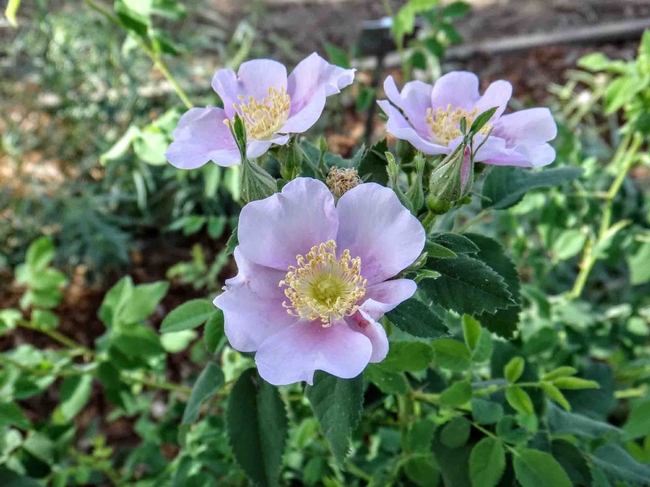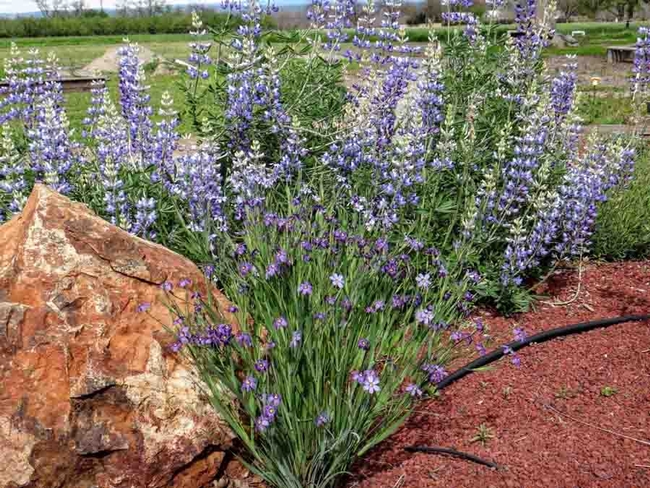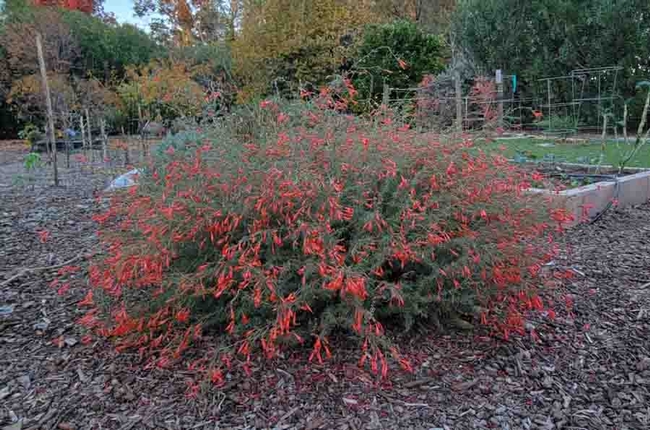Note: This is the third in a three-part series on native plants that have proven successful on the author's property along the Lindo Channel in Chico. The previous articles discussed large trees, small trees and large shrubs.

California Wild Rose (Rosa californica) is native throughout California, except for the high Cascade Range and the high Sierra Nevada. It is a deciduous, thicket-forming shrub growing four to eight feet in height, with prickly, arching stems. One to two-inch fragrant pink flowers appear from mid-spring through summer.
If planted in dry light shade, California Wild Rose needs no supplemental irrigation, but if planted in full sun, extra water will be necessary. It is adaptable to many soil types, and is useful as a barrier plant and soil stabilizer. Any all-purpose plant food will keep it healthy, flowering, and attractive all year. It is immune to mildew and rust.
California Wild Rose provides excellent nesting and shelter habitat for songbirds and attracts butterflies. The flowers support many pollinator species; after bloom, wild rose hips persist on the plant and are an important food source for birds and mammals.
Silver Lupine(Lupinus albifrons) is a perennial which quickly grows to three feet, then slowly reaches up to five feet. Flowers are very showy and fragrant, appearing in blue spikes on a white-silver bush and blooming from spring into summer.

Silver Lupine is a specific host to the Mission Blue Butterfly. It also attracts other butterflies, bees, and birds (including quail). It is deer resistant; but it is important to note that Silver Lupine is toxic to livestock.
California Fuchsia (Zauschneria californicum or Epilobium canum)is a low-growing shrub with bright orange to red flowers and gray or green leaves. This plant grows where there is extra moisture in the winter and spring, with the soil gradually drying through fall. California Fuchsias prefer a cool but sunny location, but will tolerate part shade or hot sun with moisture. Summer watering is necessary the first year. By pruning or mowing established plants in winter, the shorter varieties will stay very low at three to six inches high, otherwise growing to two feet. Plants will spread three to six feet across and boast hundreds of bright red one- to two-inch flowers from late summer to fall.

California Fuchsia can seed abundantly and be used to stabilize banks; it can sometimes become invasive.
This plant is a magnet for hummingbirds and also attracts bees. It will tolerate deer damage, and is bothered by very few pests unless grown in large numbers.
UC Master Gardeners of Butte County are part of the University of California Cooperative Extension (UCCE) system. To learn more about us and our upcoming events, and for help with gardening in our area, visit our website. If you have a gardening question or problem, email the Hotline at mgbutte@ucanr.edu or leave a phone message on our Hotline at (530) 538-7201. To speak to a Master Gardener about a gardening issue, or to drop by the MG office during Hotline hours, see the most current information on our Ask Us Hotline webpage.